Dry, sunny and wind-swept places in the garden often pose a challenge for the home gardener. But extra watering to keep plants alive in those places is a waste of your time and resources. Beyond planting drought-tolerant plants, I also encourage you to think about how you can design a space that takes advantage of full sun.
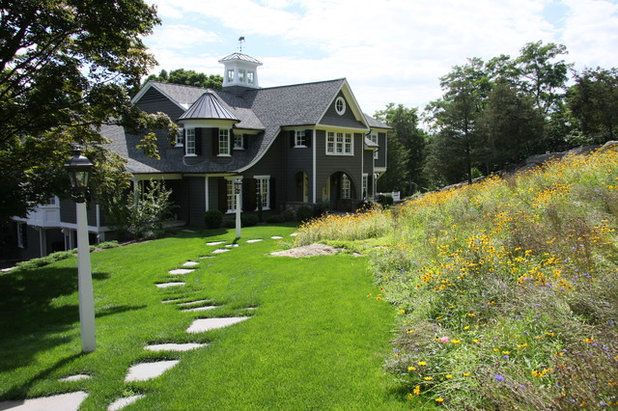
Daniel Contelmo Architects
Understand your site. Your specific conditions should inform how you design your landscape. First, take in what’s going on in your dry and sunny spot. What is making this area in particular drier and hotter than other areas of the garden? It is probably a combination of things. Some factors could include:
- Facing south. Is the garden area facing south — that is, does it have a southern exposure and full sun most of the year? Use the southern sun to your advantage and grow plants that thrive in the full daylight.
- Exposed to wind. Is wind whipping through the area and creating dry conditions? Locate the predominant direction of the winds — which may change depending on the season — and use this as an opportunity to screen the wind. Hedges and walls are great design opportunities to define a space.
- Free-draining soil. Is the soil particularly sandy or on a steep slope? The soil may not be holding moisture well because it lacks organic matter, or the ground may be sloped so that water is draining off the surface and not percolating into the soil.
One or more of the above? A very dry site will have one or more of these conditions. See how these can be used as design opportunities
.
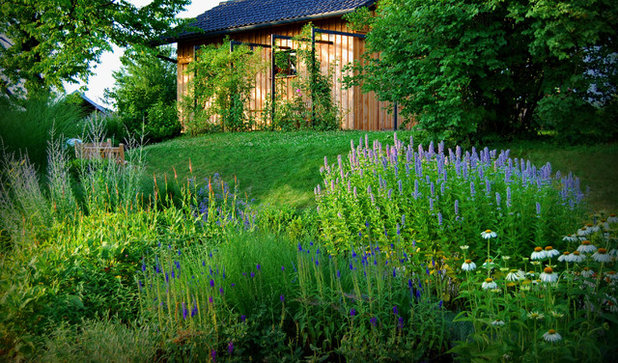 Use plants that bloom.
Use plants that bloom. Prolific flowering plants, like wildflowers and plants used for cutting gardens, need a lot of sun to produce many blooms. A full-sun exposure is a prime opportunity to create a garden bursting with flowers, as long as you use plants that are drought tolerant as well.
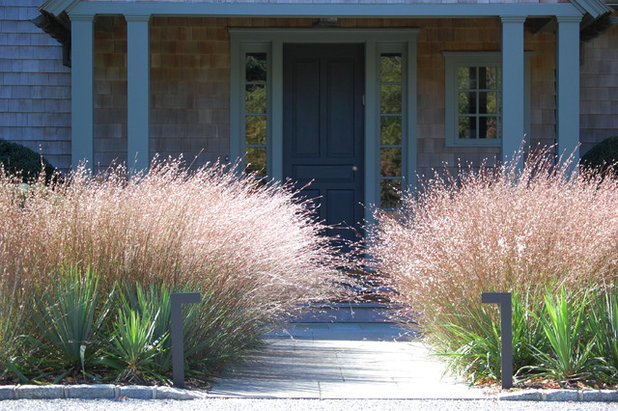
Davis Landscape Design LLC
Join the meadow movement. Ornamental grasses have gained megapopularity in residential landscapes lately, and there are more species available in nurseries today than ever before. Grasses are fantastic for dry, sunny spots because they are adapted to full sun, harsh winds and dry soils.
Choose grasses that are native to your region and read up on the prairie gardening movement. If you dream of a flowing prairie garden with wildflowers peeking up through long grasses, get it started in a dry, sunny space.
Browse more grass guides on Houzz
Shown: Little bluestem (
Schizachyrium scoparium, USDA zones 2a to 9b; find your zone)
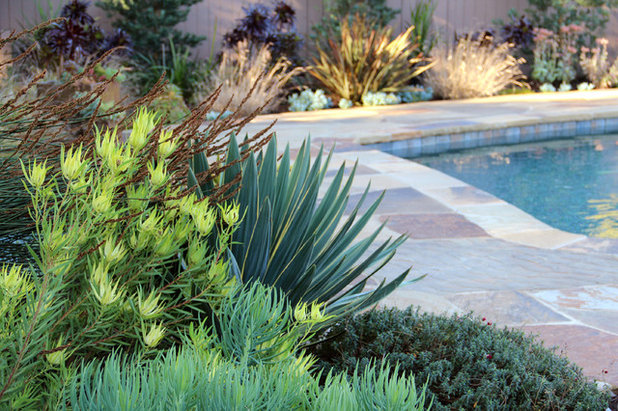
Bliss Garden Design
Use funky succulents. I’m astonished by some of the alien forms I’ve discovered in succulent plant collections at botanical gardens in arid climates. Indeed, they have spirals and spikes and blooms that are out of this world. Succulents make a statement in the landscape. Plant them in groups to create a succulent community. Start with one or two large species, like an agave or a yucca, and fill in with the smaller spreading ground cover types, like sedum and small echeveria. Succulents thrive in the driest and warmest conditions.
Grow a Garden of Succulents for Easy Beauty
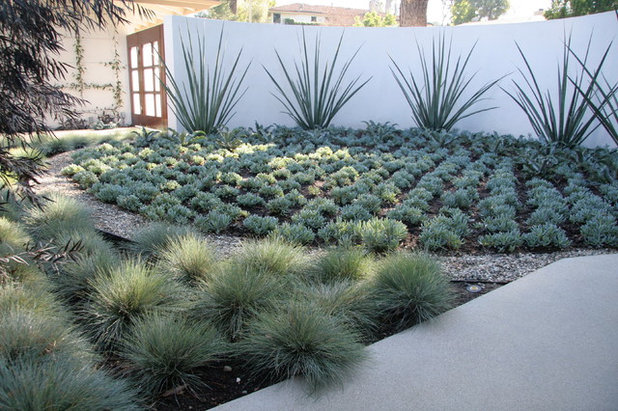
ecocentrix landscape architecture
Protect from the wind. Wind exposure can destroy plants over time — either cold winter wind or hot summer wind. Both extremes can contribute to dry site conditions. Once you’ve determined the direction the wind is coming from, you can redirect it with a wall or hedge, creating a buffer.
Walls have two sides: the windward side, which faces the wind, and the leeward side, which is fully protected. The wall’s leeward face is its most protected spot. If you put in a solid wall, you create a protected pocket of space where sensitive plants can be planted. A wall with a south face and a north face will have very different microclimates on either side. Also, be mindful of the color of the wall, because color affects how the wall will reflect or absorb heat and will impact the immediate surroundings.
Hedges are like a living wall that buffers from the wind. Both hedges and walls can define spaces in the garden. Think of them as parts of a framework for creating outdoor living spaces.
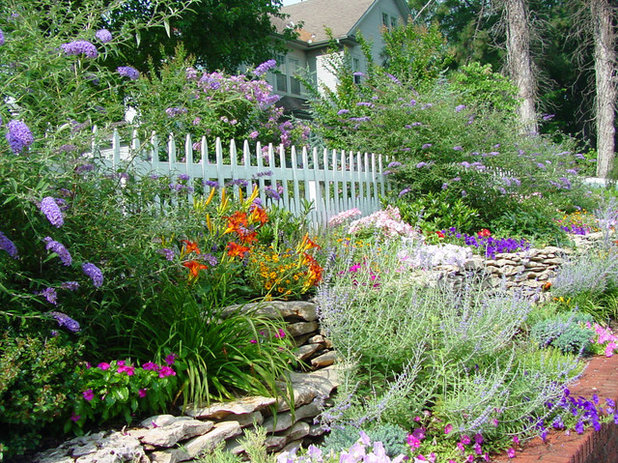
Kingdom Landscape
Rework your slope. You can terrace a steep slope if it is making water drain too quickly from your hot, sunny spot. The image here shows terraced pockets in a variety of configurations that create layered raised planting beds for flowering plants. Terraces add a lushness and spatial dimension to even small sloping garden spaces.
How to Design a Great Garden on a Sloped Lot
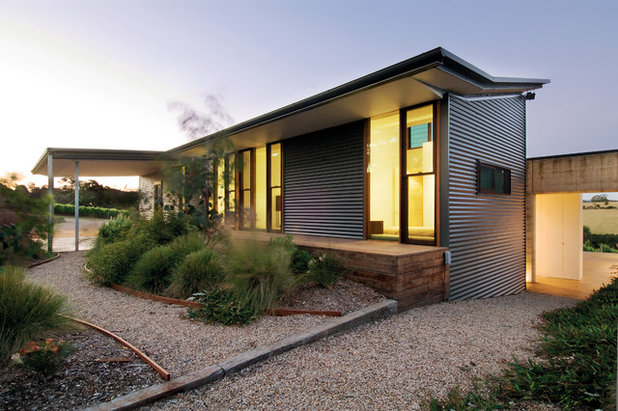
Mihaly Slocombe
Maintain. Best practices for a sustainable garden are important in dry, sunny areas. Mulch around your plants to retain moisture and to protect plant roots from temperature fluctuation extremes. Also, add compost and organic matter to improve the moisture-retention capacity of the soil.
More: Learn Your Garden’s Microclimates for a Resilient Landscape





